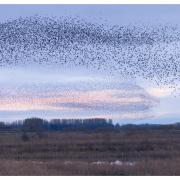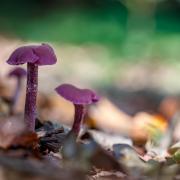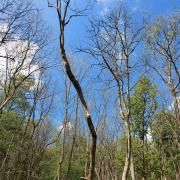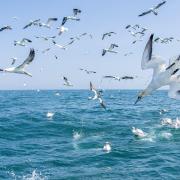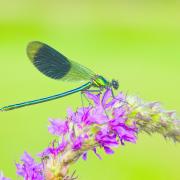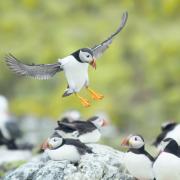Ever woken to the dawn chorus wondering which bird makes what tweet? Or what the chirrups actually mean? Thixendale based wildlife artist, Robert E Fuller offers some tips.
The early morning avian concert is now an official fixture in every nature lover’s calendar. This year International Dawn Chorus Day is on Sunday May 7th.
To help beginners make sense of daily din, expert bird watcher and wildlife artist Robert E Fuller has broken down the essentials into a simple seven step guide accompanied by video featuring detailed paintings of birds.
As a wildlife artist, Robert has a lifetime’s experience of listening to birds in the field and can tell species apart with his eyes shut.
Birdsong is far more diverse and intricate than many of us imagine. Each avian songster has an entire vocabulary of calls denoting different meanings.
And birds even have different dialects. Did you know, for instance, that a British chaffinch sings an entirely different tune to a Russian one?

Start with signature tunes.
Among the UK’s native species there are definite ‘songsters’. These are birds with beautiful voices, like blackbirds, robins, skylarks, song thrushes and chaffinches, and each has its own, distinct signature tune.
Once you’ve learned a bird’s jingle, you can always pick it out, even if it only sings a few phrases of the melody.
Although these songs sound joyful, they are actually either expressions of aggression used to warn off competitors or noisy serenades to attract a mate.
The general rule of thumb is that the prettier the tune; the more bellicose the bird that is singing it.

Build on what you already know
Most of us already have a basic knowledge of birdsong. Without even realising it, even the most unversed in nature know the hoot of a tawny owl or a cuckoo’s call.
It’s not difficult to add to this the ‘Repeat, repeat’, repeat’ of a song thrush or the incessant, noisy chitter of a wren. For such a tiny bird, a wren’s ditty is particularly loud. Robert’s exhibition includes two paintings of this characterful bird; each depicting the tiny bird with its beak wide open in raucous song.
Fit the sound to your surroundings.
If you are by a river or a stream, for instance, and you hear a loud, piping call then look out for the electric-blue of a kingfisher as it flashes past. Similarly grey wagtails make a sort of ‘chiswick’ call that is so loud you can hear it above the sound of crashing water. These beautiful birds have lemon-yellow bellies, despite their name.
On the other hand if you are walking across an arable field and you hear a joyful, exultant stream of song: look up. It’s most likely a skylark. If the sound rises and then falls in a shimmering, trill, look for the jumpy flight of a meadow pipit.
Listen to birds that say their own names.
Cuckoos, curlews, kittiwakes and chiffchaffs are named after the calls they make. Listen out for the ‘chiff’ ‘chaff’ next time you are walking through scrubland or woodland.
If you are by the sea, a kittiwake will say its name to you ‘kitty-waake’ ‘kitty-waake’ as it soars over precipitous coastal cliffs. And the ring of a ‘cur-leeew’ over an empty moor needs no introduction.
Add lyrics to the melody
Some bird songs sound like nursery rhymes. A yellow hammer is said to be saying: “A little bit of butter and nooo cheeese”. And then there’s the wood pigeon’s eternal complaint: ‘My toe hurts Betty; my toe hurts Betty; my toe hurts Betty. Oooh’.
Once you’ve got lyrics in your head it’s easier to remember the tune.
Watch out for mimics
Things get tricky when you get one bird mimicking another. Only the very best songsters can do this and the trick is part of a male’s noisy strategies to impress a mate. “I recently heard a starling impersonating a curlew,” said Robert. “Only the chatter of ‘starling’ that it emitted shortly before and afterwards gave the game away.”
Keep it local
Fascinatingly, birds actually have local dialects. A British chaffinch, for instance, sings a slightly different tune to a Siberian one. But the difference is something only a really committed ornithologist with experience of listening to a range of species across Europe needs to know












